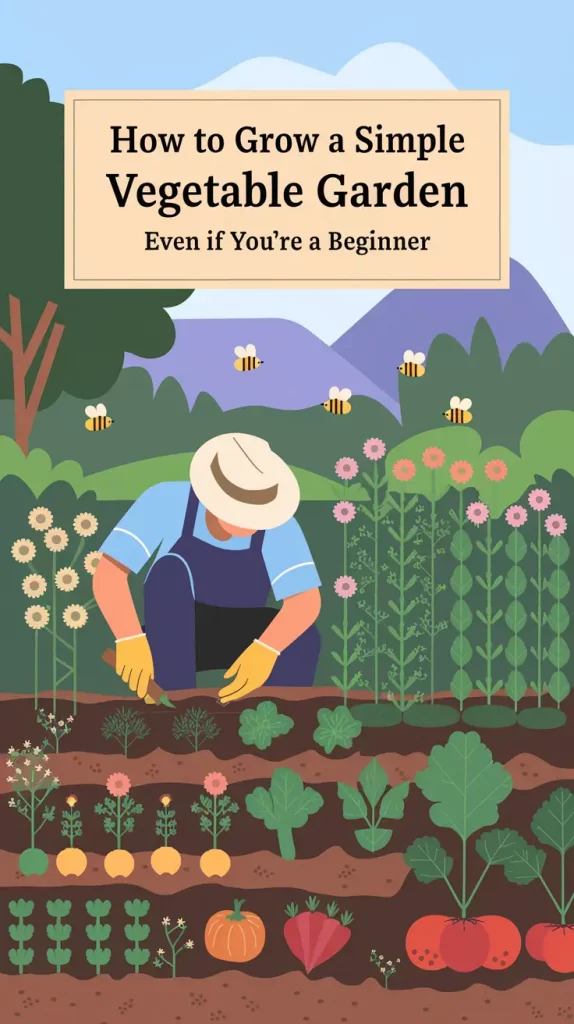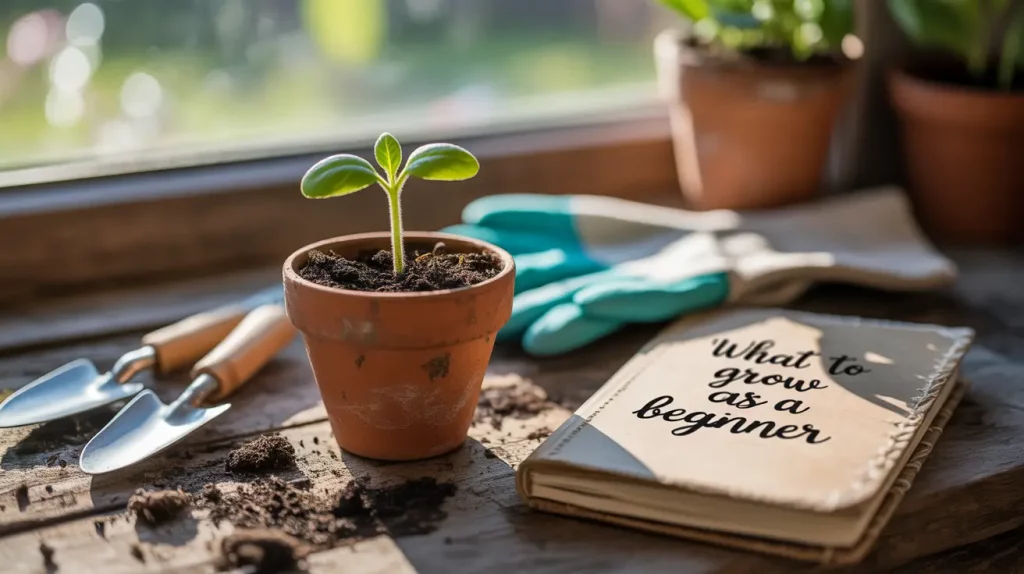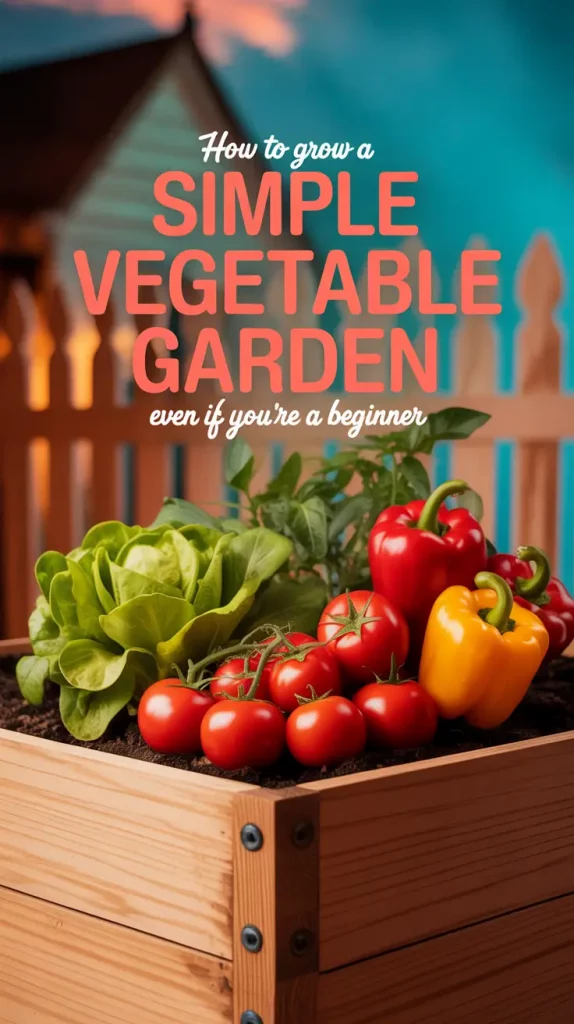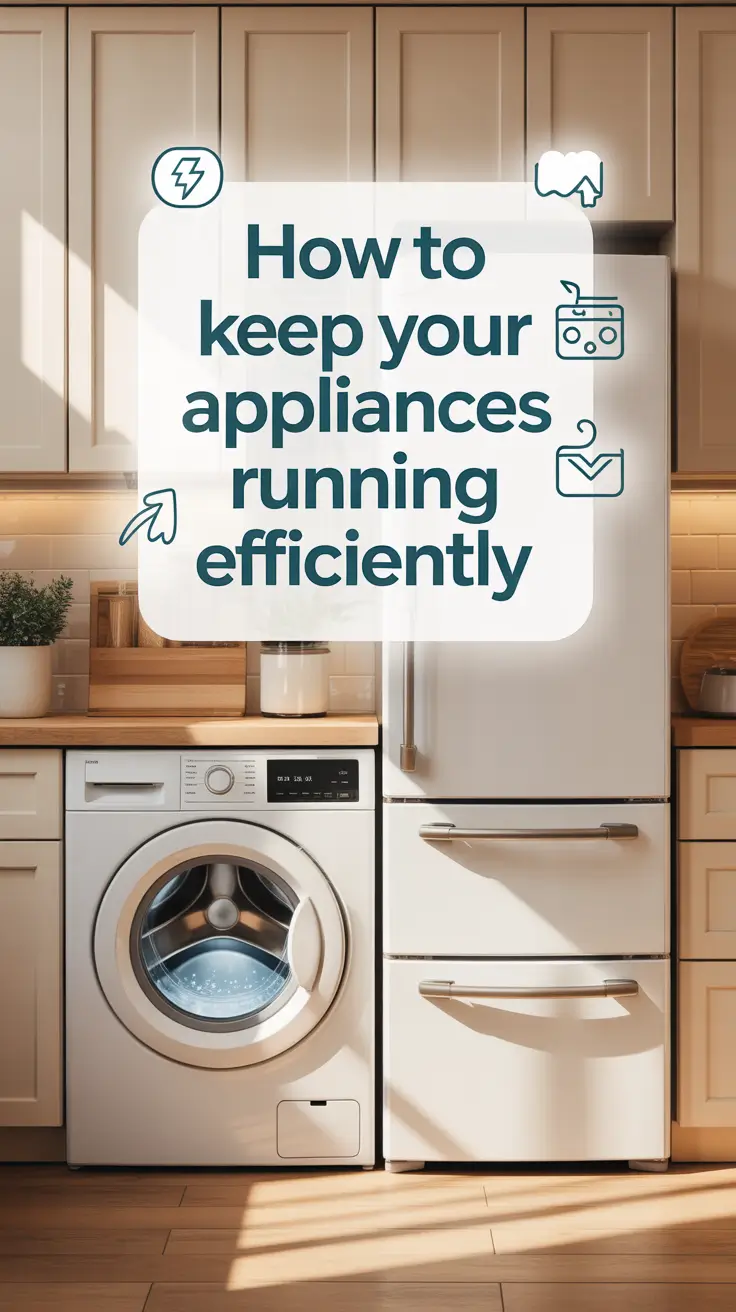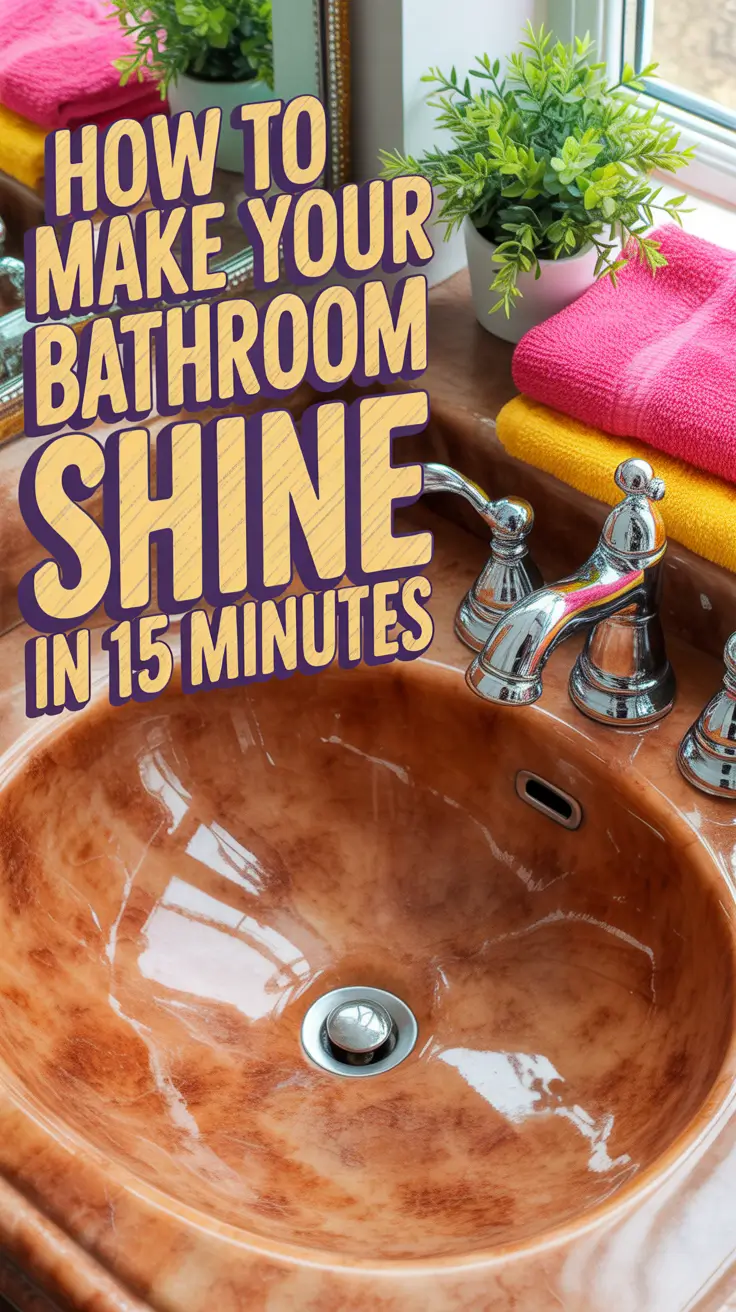How to Grow a Simple Vegetable Garden Even If You’re a Beginner
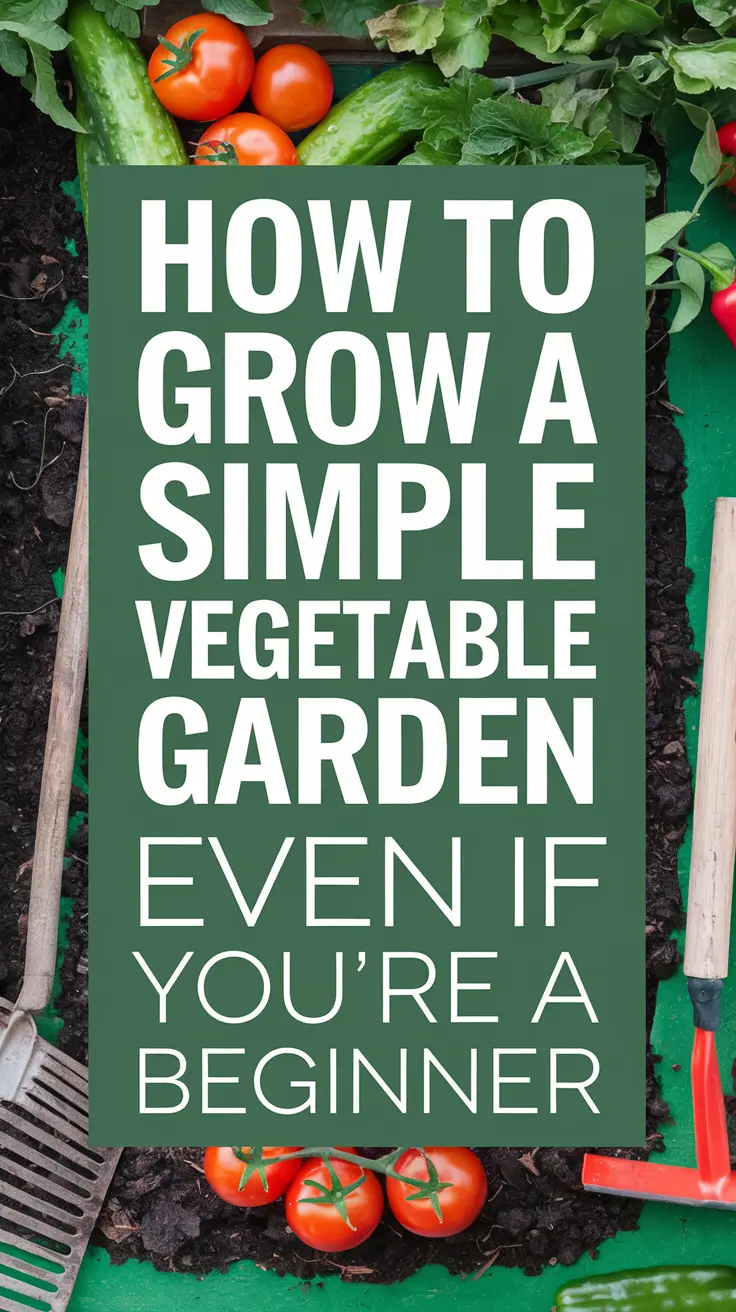
It started with a tiny pot of basil on my windowsill.
I didn’t expect much. Honestly, I just wanted something green in my kitchen. That tiny seed did something I didn’t expect: it made me feel like I could do it. Perhaps, just perhaps, I could grow more than just the herbs I buy at the store.
If you’ve ever caught yourself thinking, “I’d love to grow my own vegetables but I have no idea where to start,” you’re not alone. I’ve been in that situation before, looking at beautiful Pinterest gardens and feeling a bit lost.
I wish I had this article when I was starting out, as it explains everything in detail and doesn’t require a backyard, lots of time or gardening skills. It’s practical, visual, and built from real trial-and-error experience.
Let me show you how to turn that “someday” garden into something that thrives—right now.
Why Start a Vegetable Garden at All?
I didn’t expect how peaceful a small garden can be.
I started with one pot. Then another. At some point, I noticed I was caring for my plants as if they were my friends. That short morning routine helped me feel ready for the day ahead.
Emotional and Practical Benefits
Gardening isn’t just about food. It’s about:
- Reducing stress: nurturing something, even a sprout, reminds us to slow down
- Creating beauty: green things make small spaces feel alive
- Saving money: herbs, salad greens, cherry tomatoes — they add up fast at the store
A hobby I enjoyed became a source of new happiness. And honestly? Nothing beats picking your own basil for dinner.
Where to Begin – Planning Your First Garden
This is where most people (me included!) make their first mistake: starting too big.
Here’s what actually worked for me.
3 Steps That Helped Me Start
- Pick your space: windowsill, balcony, small backyard — whatever you have, use it. Don’t wait for perfect conditions.
- Choose 3-4 easy veggies: don’t go overboard. Think of what you love to eat fresh.
- Keep it visible and reachable: out of sight really means out of mind. Place it where you’ll see it daily.
When your garden starts to be part of your morning coffee, it’s something special. Magic.
What to Grow as a Beginner
I began by wondering if I could really grow something I could eat.
Turns out, not all veggies are beginner-friendly. Here are some tips that I think work well when you’re starting out.
Easiest Crops to Start With
- Leafy greens (arugula, spinach, lettuce)
- Radishes (quick to grow and very forgiving)
- Cherry tomatoes (you’ll thank me in summer)
- Basil, parsley, dill (herbs are low-maintenance and high reward)
The key is to go for wins early on. Seeing the greens grow encouraged me to continue.
Containers, Soil, and Light – What You Really Need
At this point, I understood that I didn’t have to use expensive tools or raised beds.
Just the right combos of container, soil, and sunlight.
Comparison Table – What I Tried
| Growing Setup | Cost | Pros | Cons |
|---|---|---|---|
| Ground bed (yard) | $$ | Space, full sunlight | Requires more effort |
| Balcony boxes | $ | Close to kitchen, manageable size | Can dry out quickly |
| Windowsill pots | $ | Easy to care for, space-saving | Limited sunlight |
My favorite? Balcony boxes. They seemed like small raised beds but didn’t take up a lot of space.
Daily Care Without the Overwhelm
This was my biggest fear: What if I forget to water them?
It turns out that gardening can be part of your morning routine.
Simple Daily Routine
Here’s what I do (takes 5–10 minutes max):
- Check soil moisture with a finger
- Water if needed (not every day!)
- Pinch off yellowing leaves
- Rotate pots once a week for even light
Plants love consistency. And honestly, so do I. I started to enjoy it and found it helped me relax.
Mistakes I Made (So You Don’t Have To)
Here’s the truth: I messed up a lot. But every mistake taught me something.
What to Avoid
- Planting too many at once: I couldn’t keep track
- Ignoring sunlight: light = growth. It’s non-negotiable
- Using old soil: I thought I was being thrifty. I wasn’t
Start small. Observe. Adjust. That’s the rhythm that works.
When and How to Harvest
The first time I picked my own salad greens, it seemed like a miracle. I made a whole lunch without leaving the house.
Tips for Harvesting
- Cut leafy greens when they’re 4-6 inches tall
- Pick radishes as soon as they show above the soil
- Harvest cherry tomatoes when fully red (and still firm)
You don’t need to wait for perfection. Freshness is the reward.
Final Thoughts
The main point to remember is that you don’t need much space or experience to start growing your own food.
All that’s required is a bit of light, some good options and a reason to begin.
Gardening, for me, started as an experiment. It became a ritual.
🌿 Save this post if you’re dreaming of your own little green corner.
👉 What’s one small habit you’ve started that changed your daily life? Share it below!

